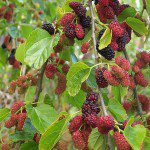 These are ideas I have been developing on my blog – Druid Life , and are not part of any wider perception of what Druidry is (yet). However, so far the idea of approaching aspects of life as art forms has caught people’s imaginations so I’m putting it out into the world. There is nothing definitive here, and no authority, just ideas about how we might take Druidry forward to be less about private personal faith and more about living in the world. It’s also about empowering people to work with their own inspiration. We can be bardic, and living in inspired ways, without having to be conventionally ‘creative’.
These are ideas I have been developing on my blog – Druid Life , and are not part of any wider perception of what Druidry is (yet). However, so far the idea of approaching aspects of life as art forms has caught people’s imaginations so I’m putting it out into the world. There is nothing definitive here, and no authority, just ideas about how we might take Druidry forward to be less about private personal faith and more about living in the world. It’s also about empowering people to work with their own inspiration. We can be bardic, and living in inspired ways, without having to be conventionally ‘creative’.
What I’ve identified below are 9 areas of endeavour that anyone could choose to practice as arts. By this I also mean that they should not be assumed to come naturally. They can be studied, developed, expressed with beauty and consciously put into the world just as any other art form is. I’m going to give an overview here, but on my usual blog I have gone through each area and how it works. Many of these are ideas that come up in other aspects of Druidry, what I think I’m doing differently is this idea of treating them like art forms, and the implications of that.
Relationship: We readily assume that relationships are ‘natural’ and require no conscious attention. As a result many of us don’t even notice half the relationships in our lives, or the implications of them. Once we look deliberately at relationship, we become more aware, and we can start to deliberately craft relationship so that our love lives, families, working partners all become a deliberate form of art into which we pour soul and inspiration.
Deep Contemplation: In going beneath the surface, asking profound questions and seeking real answers, we step away from a superficial life. Finding good things to contemplate and the mental tools with which explore, our whole understanding of the world can change. Weaving threads of ideas and understanding together, making new concepts out of the raw materials we have. This may manifest in all kinds of ways, but is something that we can encourage others to do, and in sharing it, help to make it more socially acceptable.
Sensing Truly:
Not only listening to the humans we encounter, but to all that is around us, to birds and wind, to the voices within things. Seeking out that which is not usually heard. Any open sensory interaction can be developed as an art, we might equally practice seeing what is there, feeling in a real way, becoming more in tune with the interface of our experience and the world. Habits of perception can make us blind to what it really there. Deliberate, artful engagement gives us clarity.
Compassion: It begins with a desire to understand, a willingness to hear and to look beneath the surface. Open to the feelings of others, non-humans included, able to feel for them, and with them. We can also practice compassion upon ourselves, and in that compassion also learn to treat those around us more gently. Compassion does not stay a hand from doing a hard but necessary thing. It requires us to mourn the unavoidable consequences, and to seek for the best way through.
Looking for wonder: Seeking the numinous is the art of finding what is good and beautiful. It is the skill of seeing spirit manifest in the world, or at an earlier stage, it is seeking for the means to play that melody within our lives. Banality is an easy, socially supported perception to hold. Seeking wonder requires conscious engagement and a willingness to be moved. When we are moved, we can then share that.
Nurturing: This is the art of helping other things to flourish. Be that raising children, growing plants, easing pain, facilitating creativity or a great many other things. Nurturing is the art of holding a space that enables others to grow and develop. Praising, encouraging, listening, caring and finding ways to nourish are all aspects of this art.
Slowing and stopping: The modern world is hectic. For a spiritual life, it is necessary to slow down, and sometimes to stop, being here, and now, not moving or acting, just experiencing. A person who studies slowness as an art may explore the scope for
enabling slowness in others.
Good speech: Clear, honest, accurate and helpful communication is an art that facilitates a great many other things. We practice this not just by honing our personal skills but by encouraging it in others, and if necessary, demanding it in others. With questions that press for better answers, refusing to accept poor logic, domineering words, or verbal manipulation, we take this art forwards.
Responsibility: We begin by learning to differentiate between things we are responsible for and things we are not. The development of this art involves learning to take responsibility through choice, recognising when there is something to be lifted up and carried forwards. The art of responsibility is the art of not looking the other way.
There is no end point with any of these, any more than in other art forms. Committing to these ideas as arts is committing to lifelong work. All of them require, at least once you’re past the basic ‘learner’ stage, dedicated involvement with something outside the self. Being the only druid in the village does not mean you are a druid in isolation. Practicing druidic arts does not require anyone else to notice or understand that you are doing a druid thing in public. The reasoning may remain deeply private, the consequences are in the world.
So, if you want to modify these, add more, add queries, argue the whole premise, or anything else, please drop by www.druidlife.wordpress.com and share your thoughts.

















